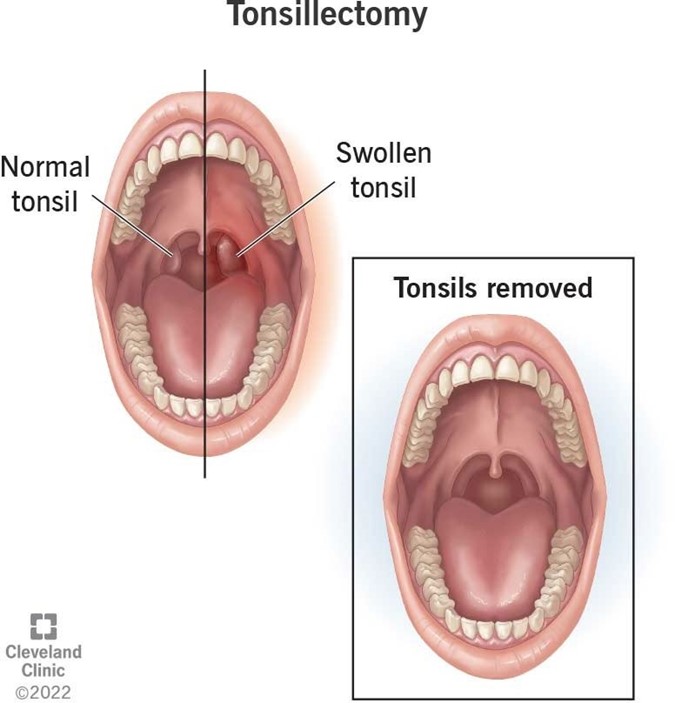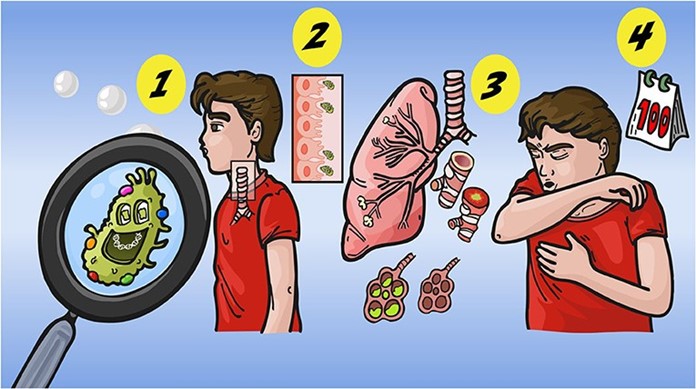A nurse is caring for a child who is 2 hours postoperative following a tonsillectomy. Which of the following fluid items should the nurse offer the child at this time?
Cranberry juice
Crushed ice
Orange juice
Strawberry milkshake
The Correct Answer is B
Choice A: Cranberry juice is not a suitable fluid item to offer the child at this time, as it is acidic and can irritate the throat and cause pain or bleeding. Cranberry juice can also stain the surgical site and make it difficult to assess for signs of hemorrhage.
Choice B: Crushed ice is a suitable fluid item to offer the child at this time, as it is cold and can soothe the throat and
reduce swelling or inflammation. Crushed ice can also hydrate the child and prevent dehydration.
Choice C: Orange juice is not a suitable fluid item to offer the child at this time, as it is acidic and can irritate the throat and cause pain or bleeding. Orange juice can also interfere with the clotting process and increase the risk of hemorrhage.
Choice D: A strawberry milkshake is not a suitable fluid item to offer the child at this time, as it contains dairy products and can increase mucus production and cause coughing or gagging. A strawberry milkshake can also stain the surgical site and make it difficult to assess for signs of hemorrhage.

Nursing Test Bank
Naxlex Comprehensive Predictor Exams
Related Questions
Correct Answer is D
Explanation
Choice A: A decreased heart rate is not a sign of pain in an infant, as pain usually causes an increased heart rate due to sympathetic nervous system activation. A decreased heart rate may indicate other problems, such as hypothermia, hypoxia, or bradycardia.
Choice B: A decreased respiratory rate is not a sign of pain in an infant, as pain usually causes an increased respiratory rate due to sympathetic nervous system activation. A decreased respiratory rate may indicate other problems, such as hypothermia, hypoxia, or respiratory depression.
Choice C: An increased formula consumption is not a sign of pain in an infant, as pain usually causes a decreased appetite and oral intake due to discomfort and distress. An increased formula consumption may indicate other factors, such as growth spurt, hunger, or thirst.
Choice D: An increased crying episode is a sign of pain in an infant, as crying is one of the most common and reliable indicators of pain in infants who cannot verbalize their feelings. An increased crying episode may also be accompanied by other signs of pain, such as facial grimacing, body tensing, or inconsolability.
Correct Answer is B
Explanation
Choice A reason: This choice is incorrect because mumps is not the common name for pertussis. Mumps is a viral infection that causes inflammation of the salivary glands, especially the parotid glands. It may cause symptoms such as fever, headache, and swelling of the cheeks or jaw. It can be prevented by vaccination with the measles-mumps-rubella (MMR) vaccine.
Choice B reason: This choice is correct because whooping cough is the common name for pertussis. Pertussis is a bacterial infection that causes severe coughing spells, which may be followed by a high-pitched whoop sound or vomiting. It may cause complications such as pneumonia, seizures, or brain damage, especially in infants and young children. It can be prevented by vaccination with the diphtheria-tetanus-pertussis (DTaP) vaccine.
Choice C reason: This choice is incorrect because the fifth disease is not the common name for pertussis. The fifth disease is a viral infection that causes a rash on the face, trunk, and limbs, which may resemble a slapped cheek appearance. It may cause mild symptoms such as fever, runny nose, or joint pain. It usually affects children and is self-limiting.
Choice D reason: This choice is incorrect because chickenpox is not the common name for pertussis. Chickenpox is a viral infection that causes an itchy rash with fluid-filled blisters all over the body. It may cause symptoms such as fever, headache, or loss of appetite. It can be prevented by vaccination with the varicella-zoster (VZV) vaccine.

Whether you are a student looking to ace your exams or a practicing nurse seeking to enhance your expertise , our nursing education contents will empower you with the confidence and competence to make a difference in the lives of patients and become a respected leader in the healthcare field.
Visit Naxlex, invest in your future and unlock endless possibilities with our unparalleled nursing education contents today
Report Wrong Answer on the Current Question
Do you disagree with the answer? If yes, what is your expected answer? Explain.
Kindly be descriptive with the issue you are facing.
